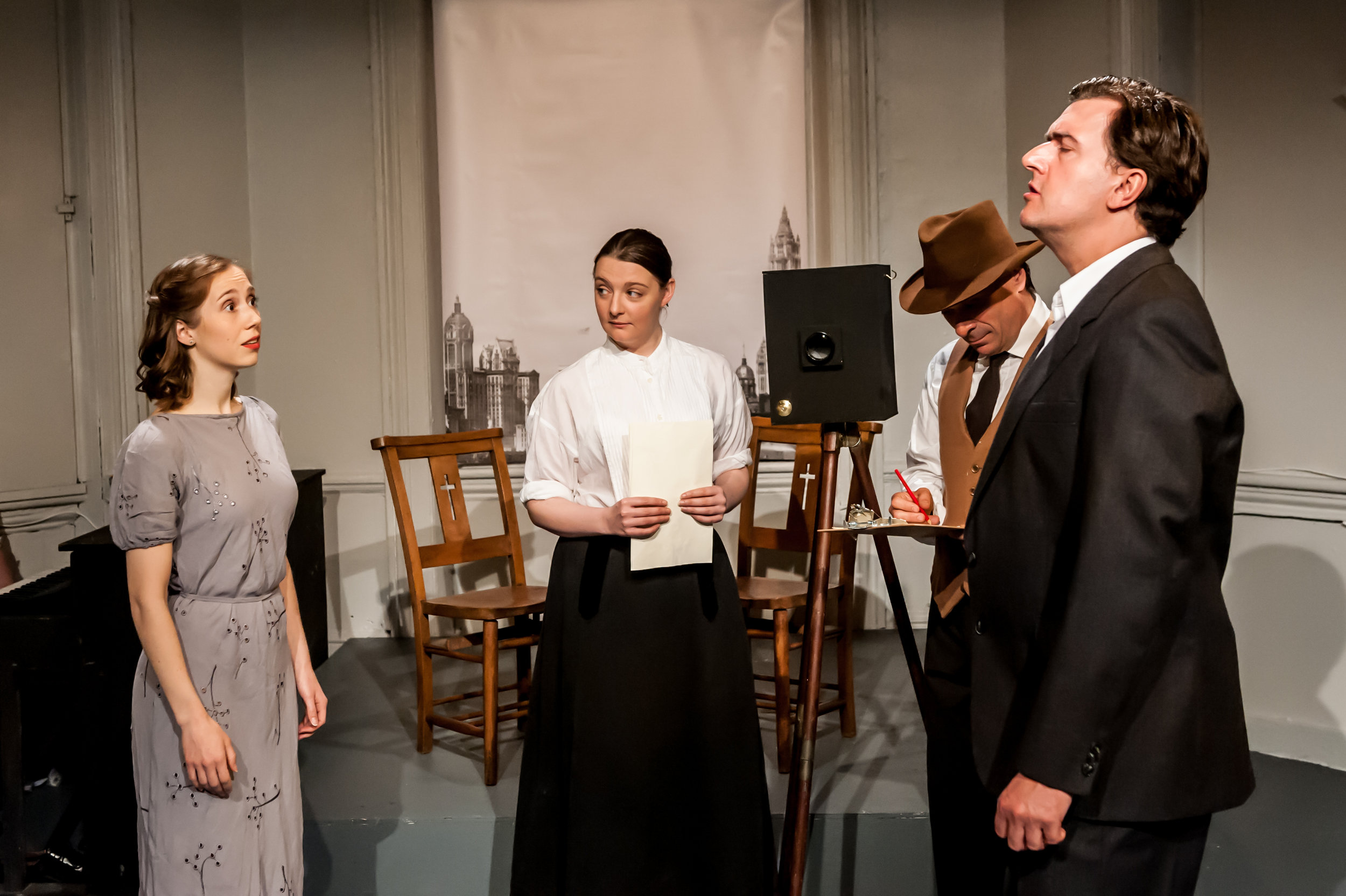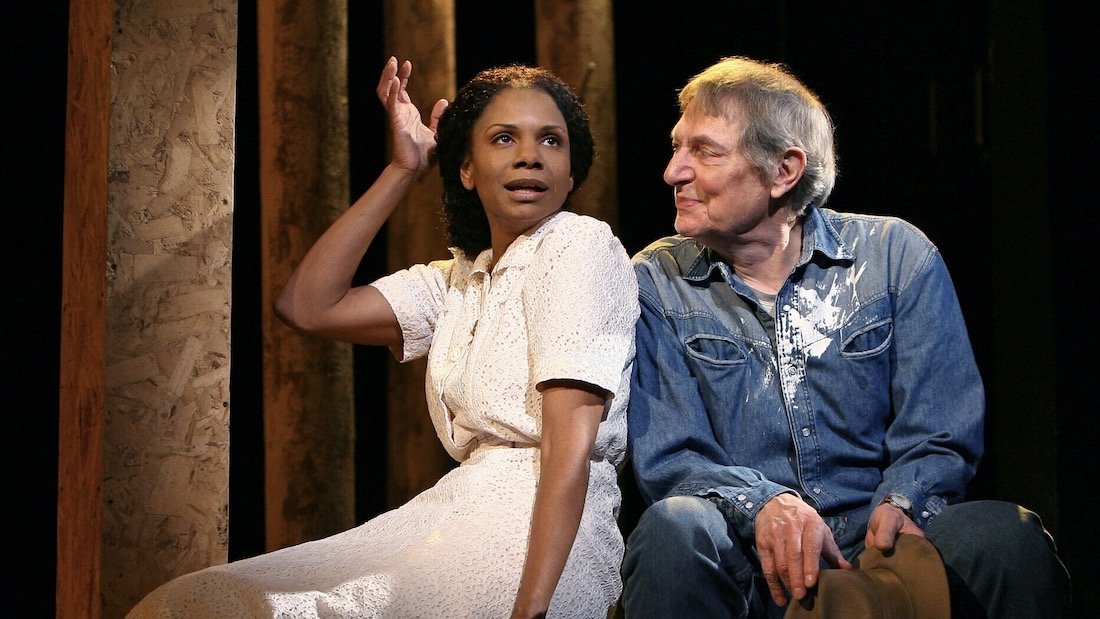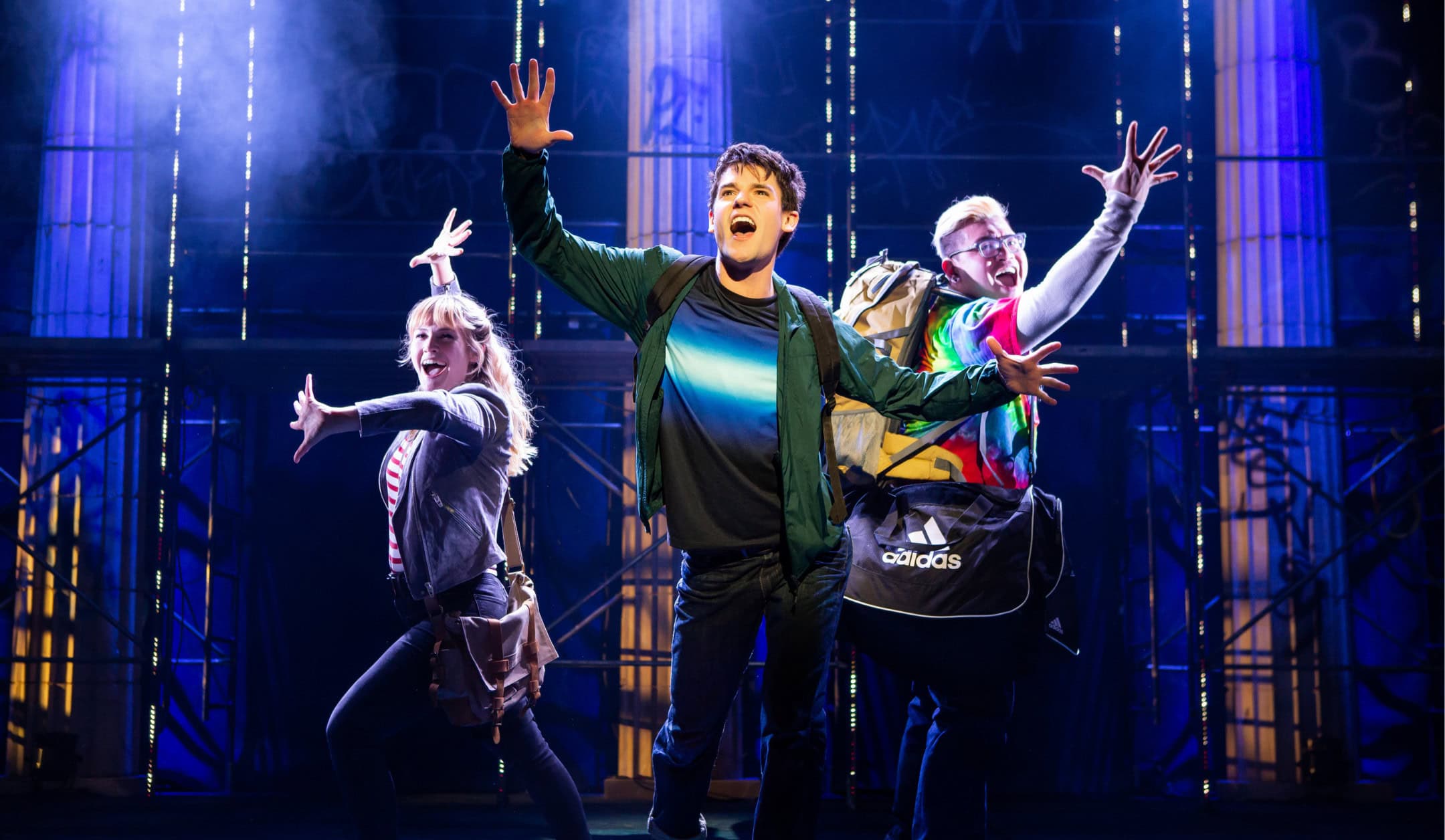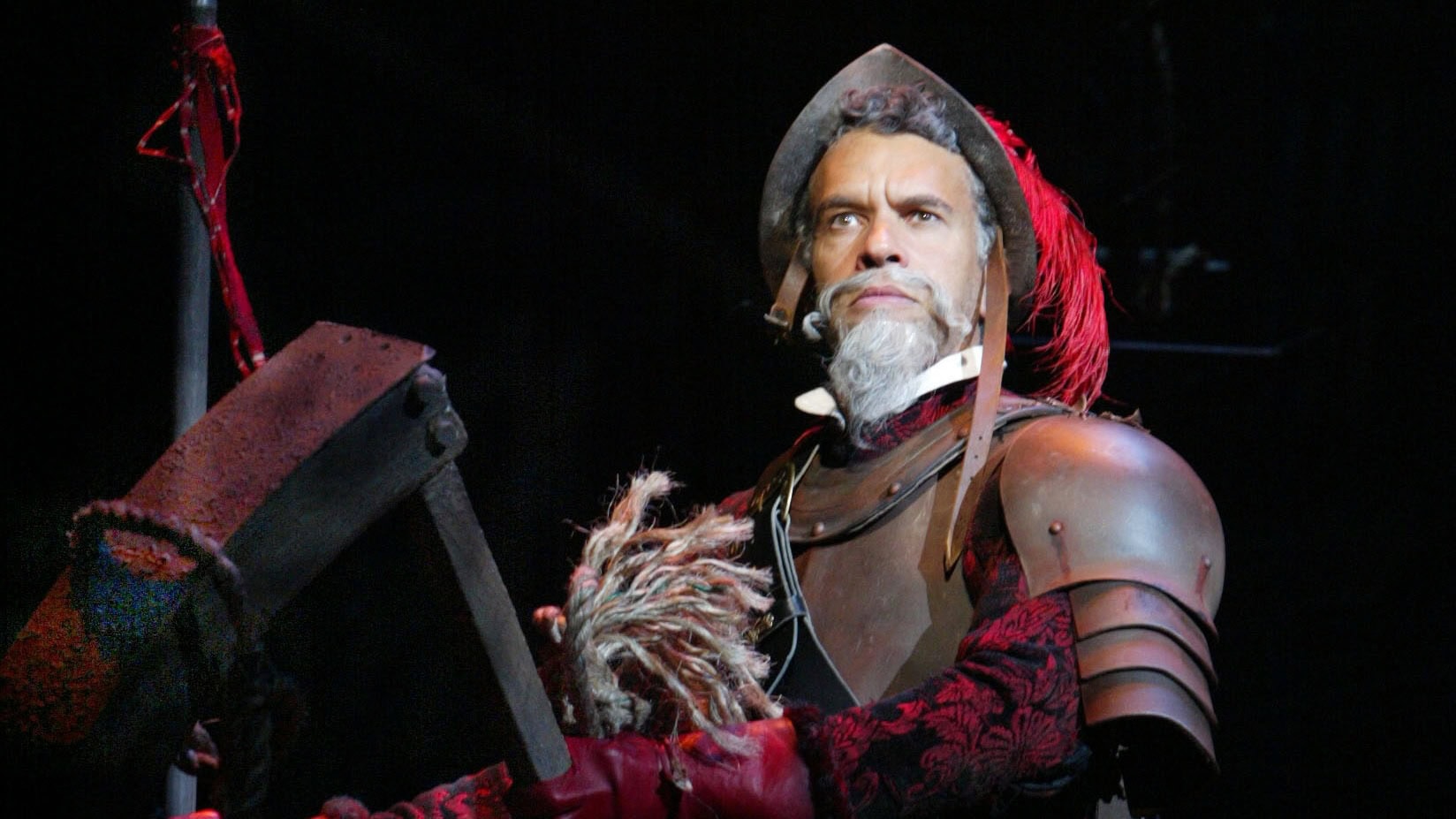
Warner Brown is an internationally-renowned writer of plays, musicals and arena spectaculars. His musical The Biograph Girl, written in collaboration with David Heneker, recently enjoyed a revival at London’s Finborough Theatre. Here, Warner shares an insight into the show and the Hollywood history that inspired it.
The Biograph Girl came about by the happiest of chances. I was at university — nought but a callow lad — and I wrote the show on a wave of youthful fun. Little did I know that it would lead me to the West End and to some of the warmest friendships I have ever known. The theatre director Wallace Douglas — he of the Brian Rix farces and “Charlie Girl” fame — was a family friend. My mother gave him the script of the show and, in turn, he gave it to the top London agent Ian Bevan. Ian called me in, said he would like to represent me and, if I didn’t mind, could he get the script to David Heneker for an opinion? David was the renowned composer of shows such as Half A Sixpence, so my answer was a definite – yes, he could. Soon I was sitting in David’s flat in Chelsea, unaware that this wondrous gent would become my collaborator, mentor and almost one of the family.
David was old enough to be my grandfather and had the air of a distracted Edwardian gentleman, but working with him was an honour and an education. He taught me lessons that I use to this day — how to shape a lyric; how to match words to music; how to write truthful theatre. He may have been getting on a bit but we were like two kids together. I owe him a tremendous debt.
With David attached, Harold Fielding came on board. Harold was the premier producer of musicals of the day and he approached the show with gusto. The idea for the musical had come about when I read Lillian Gish’s memoir The Movies, Mr Griffith and Me. Harold decided to bring the octogenarian Miss Gish over from the States for the opening night at London’s Phoenix Theatre.
To say that Lillian Gish was a living legend is like saying that da Vinci could paint or Shakespeare write some plays. This leading lady of silent pictures was one of the first global superstars, arguably the very first face to be filmed in close-up: American royalty. I could hardly imagine it at the time but she was to become a true friend. As was the actress Harold picked to headline the show, the irrepressible Sheila White.
The Biograph Girl is a celebration of “the time before the talkies”, built around the story of Lillian Gish, her friend Mary Pickford and the pioneer film director D.W. Griffith. Griffith is the true artist of the silent era while Mary – played by Miss White – realises its financial opportunities. The character of Lillian sits somewhere in the middle…worshipping Griffith’s artistry while appreciating Mary’s hutzpah. Mary’s star rises as Griffith’s wanes. At the end of the show, Griffith and Lillian part ways. It is, to me, the show’s most touching moment. “Goodbye, Miss Lillian”, says Griffith. “Godspeed, David” replies Miss Gish, using his Christian name for the very first time.
It’s no surprise to say that my favourite silent movie of them all is a picture directed by D.W. Griffith and starring Miss Gish. For as long as I knew her, by the way, she was always “Miss Gish” to me. Somehow to call her “Lillian” would be like addressing the Queen as “Liz”. The film in question is “Way Down East” and in its famous climax the unconscious Miss Gish floats on an ice floe down a river towards a waterfall… but don’t worry, she’s about to be rescued by the man she loves! Griffith worked long before the age of special effects so Lillian was filmed on a real ice floe, on a real river rushing towards a real waterfall. And she didn’t give it a second thought. She told me, though, that in later life she blamed her rheumatism on lying on that ice floe for hours on end.
Putting real life characters on stage is a challenge in itself. You have to give their lives the pattern of fiction while remaining true to the core of their reality. In the show, Lillian has a duet with Mack Sennett, the greatest film comedy director of his day. Since both worked for the same studio, I thought this a reliable proposition. It was only after the show had been running for some time that Miss Gish told me the two had never actually met! Trouper that she was, she had allowed it in the show because it was the essence of truth if not the actuality.
Nova Skipp. Sophie Linder-Lee and Jason Morell in the 2018 Finborough Theatre production. Photo credit: Lidia Crisafulli
A few days before the opening at the Phoenix, Mr. Fielding invited Miss Gish to watch a run-through of the show and afterwards talk to the actors about the characters they were playing. Remember – these “characters” had been real and living people to Miss Gish. Now she was being asked to comment on our somewhat fictionalised versions of them. At a preview performance that night, the actor playing movie mogul Adolph Zukor was seen to be stroking the costumes of the other actors he was playing scenes with. We couldn’t imagine what on earth he was doing! We rushed round to ask him after the show and he said “Oh, Miss Gish told me that before he started making movies Zukor was in the rag trade and he had a habit of feeling the clothes of the people he was talking to to judge what kind of cloth they could afford.” We had to tell him that what he was doing looked kinda weird to a theatre audience and, in this instance, theatrical truth must over-rule true truth, if you know what I mean.
Fast forward a few years now and the show is revived at the Finborough. I have to admit, when the idea was first proposed to my agent I was not in favour. The script had been a work of my extreme youth and though I looked back on it fondly I wasn’t sure that its lightness, its delicacy, its “charm” would have survived the intervening years. For politeness sake, I decided to have a face-to-face meet with the director Jenny Eastop to tell her thank you for asking but the answer’s “no”. Two hours later I came out of the meeting and —I don’t know how, don’t know why — but I’d said “yes”. Jenny is remarkably persuasive and the vision she had for the show just shone in her face. When the production opened, it was a revelation to me to see how fresh it all seemed. Somehow it had stood the test of time and Jenny had unleashed all the fizz of the original – and more.
The production at the Phoenix Theatre had born all the hallmarks of a Harold Fielding presentation. High production values; glamour; glitz. At the Finborough, though, you have to get real. You have a tiny space and a tinier audience. So – perforce – Jenny had to get back to basics. It was this approach that really paid off and, in fact, it’s one I would recommend to any company thinking of doing the show now. Those early days of the silent movies were days of make-do-and-mend. With simple props, minimum sets and scenes flowing one into the other, Jenny caught that sense of improvisation and working on the hoof. Some of her simple choices, like placing the fight scene off-stage, made wonderful, and sometimes humorous, use of her limited resources. Of course, if your resources are not limited — go for it. There are plenty of opportunities for crowd scenes, glamour and Hollywood excess. But if excess is not available to you, imagination will suffice. It did so in the early days of the industry, where indoor scenes were actually filmed outdoors (because of the light) and the walls of rooms created by painted sheets, which were often seen to blow in the breeze. Bricks walls as ephemeral as a gust of wind yet as real as the dreams they were fashioning and sending out on beams of magic to the whole, expectant world.
So now The Biograph Girl has a new lease of life and is back in the marketplace, ready to continue its voyage of rediscovery. And it has, I feel, a timely air about it. As we all fret about increasing globalization, it is maybe good to remember how moving pictures – silent moving pictures – were the first art form to have a truly international appeal. Firstly, they were available to everyone, not just the elite. But secondly, because they were solely visual, they spoke a universal language, as understandable in the outer reaches of the wildest continents as on the Upper Eastside of New York. A language that had “the power to make men brothers”.
Our show is a work of youth, of enthusiasm, of brio. Yes, there is an underlying sadness of missed opportunities and wasted potential. But more, much more than this, it is a tale of celebration. A tale of kids at play in a toyshop called Hollywood. A tale of innocence. A tale of joy. Recapture that innocence and who knows what we could do?
Learn more about how to perform The Biograph Girl, which is open to licence requests. Buy the script.
(Photo credit: Lidia Crisafulli)

Plays that Inspired Musicals

QUIZ: Which Character from The Lightning Thief Are You?


